Published Jan 4, 2019
Changes from Pilots to Series
With the universe is expanding, big changes are happening from Pilots to Series
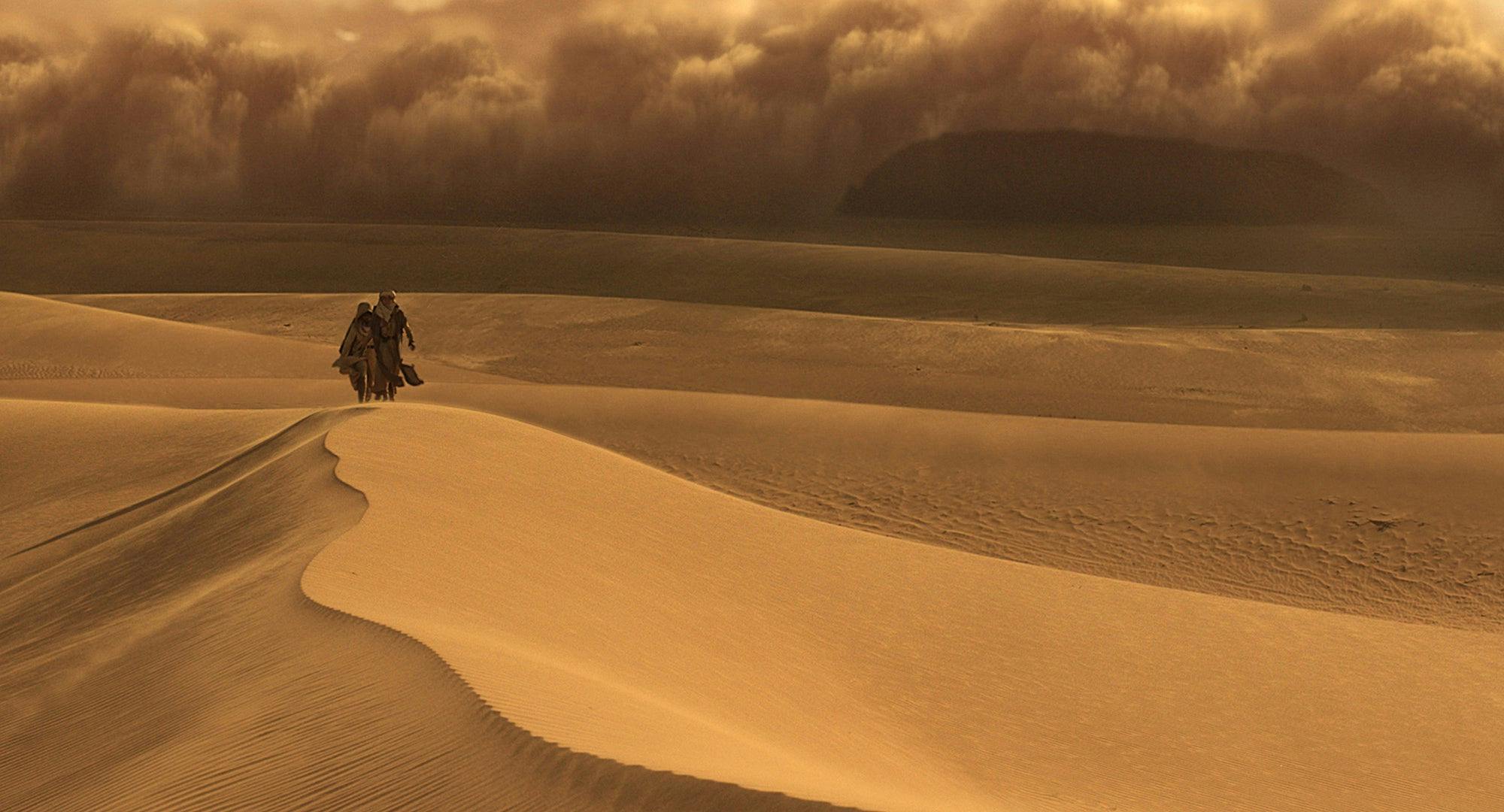
startrek.com
The universe is expanding and so is everything in it. (I can personally attest to this truth by where I clasp my belt compared to five years ago.) Our beloved Star Trek franchise expands, too, and when it does its orbits realign accordingly. This is evident when you go back and watch one of the pilots and say to yourself, “Yes, these are the characters I love… but they aren't quite how I remember them.”
A pilot is a showbiz term for a “first episode” that doubles as a proof of concept to a network. Star Trek blazed so many trails in television, and one of them is that it was among the first to have two pilot episodes. The original, “The Cage,” wasn't quite what NBC wanted, but the suits recognized the potential for greatness. Gene Roddenberry went back to the drawing board for “Where No Man Has Gone Before.”
There are a lot of obvious changes between “The Cage” and the three TOS seasons we've come to know and love. (Spock freaking out about “The Women!!” being the most famous.) Less discussed are the changes between “WNMHGB” and the rest of the series.
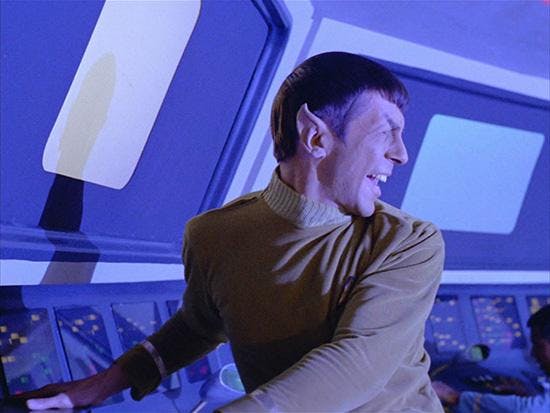
Most noticeable are the visual elements. To paraphrase Jerry Seinfeld, “Whaaaaaat's the deal with those collars?” Plus, Spock is wearing Command Gold, not Science Blue. (Scotty isn't in Engineering Red, either.) Spock's eyebrows are way, way slanted and he's got a lot more makeup on than he'll have for the rest of his career. Compared to “The Cage,” he's calmed down, but not to the point where he won't shout. As the Enterprise approaches the Galactic Barrier, the cool reserve we expect from Spock goes out the airlock as he expressively shouts “All stations!” and “Negative!” from his position on the bridge. His steely, some-might-say heartless thinking is on display when he tells Kirk he must “kill Mitchell while you still can,” but it isn't in the dispassionate “He knows, doctor, he knows,” style that Spock will give bad news in later episodes like “The City on the Edge of Forever.” Quite frankly, he's a little unpleasant.
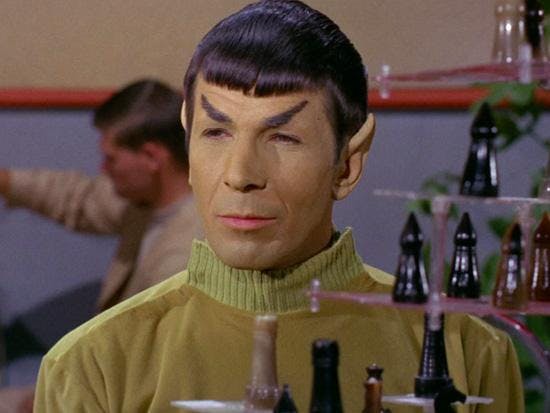
Which isn't to say logic isn't yet his bag. During the opening scene, a game of three-dimensional chess, we get one of the all-time classic lines. “Irritating? Ah, yes. One of your Earth emotions.” It's just a shame that Spock's top foil, Dr. McCoy, wasn't on this first trip. Dr. Mark Piper makes his sole appearance here, and no disrespect to the good doctor, but we're all better off that he got swapped out. (Yeoman Smith exchanged for Yeoman Rand was a good trade, too.) Don't go looking for Lt. Uhura anywhere, as she isn't in this episode at all.
Despite the absences of some of our favorite characters, these are still surface changes. The essence of Star Trek as we know it was there, especially in its captain. (Even if he did have a weird phaser rifle, which we wouldn't see much of again.) The difference between The Next Generation's pilot, “Encounter at Farpoint, Part I,” and the remainder of the series is more obvious. For starters, Captain Picard is a little bit of a jerk.
I love all my captains equally, but I've been pretty upfront over the years that Picard is not only the greatest leader on Star Trek, but the greatest leader in all of fiction. (And, obviously, in non-fiction, too; have you ever met real people? So many faults!) But in “Encounter at Farpoint,” he's really not the guy you want to hang out with sipping Earl Grey tea discussing archaeology late into the night.
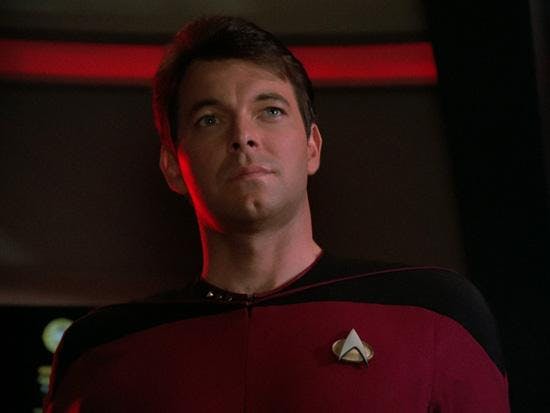
Once the Enterprise picks up Commander Riker on Deneb IV, Captain Picard doesn't have a nice schmooze with the guy who is going to end up his best pal for the rest of his life. Instead, he gives him the pointless and stressful task of a manual docking maneuver between the saucer and stardrive sections. (It also makes for some pretty slow television.) Picard then wigs out about the idea of children on the Enterprise. He'll eventually mellow on that last point, but this “array swinging” way he greets Riker is extremely out of character.
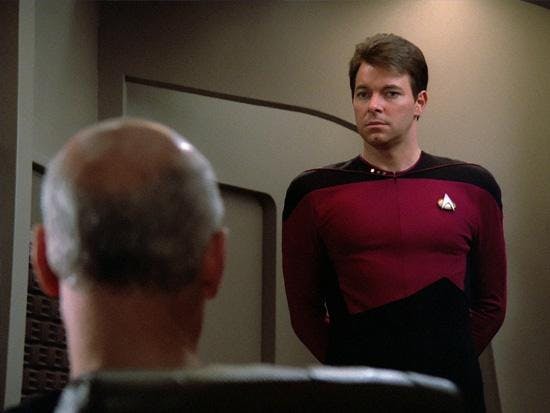
The writers wisely knew Picard needed some catchphrases. You don't cast someone like Patrick Stewart without leaning into his diction. He says “Make it so” once and “Engage” twice. Testing the waters a bit. But he also says “Now hear this!” twice. It's got some naval precedent, but it's a ridiculous thing to say, even more than calling your second in command “Number One.” It never made it past the pilot.
The later shows didn't have such drastic changes. Well, except that Voyager's Tom Paris was first introduced as a dangerous, treasonous convict. But pretty soon the producers realized they cast Robert Duncan McNeill. So, repositioned him as the nicest boy.
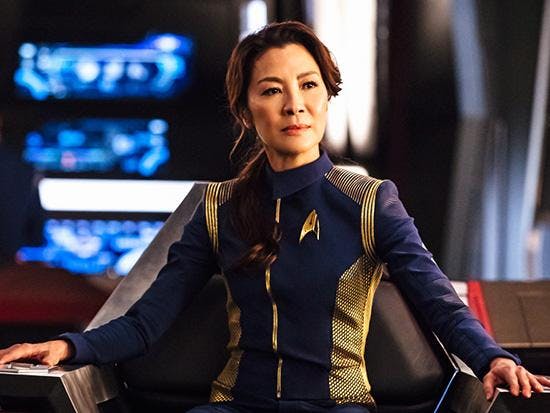
Like everything else on Discovery, deception is the game. During the publicity run-up it looked like Michelle Yeoh's Captain Georgiou would be a significant character in every episode. Then, at the end of the two-part pilot, she gets killed. Boo! But later in the season, she's back! (Kinda. It's complicated.) Now, Yeoh seems very entrenched in the Star Trek family, with the expectation that she isn't going anywhere.
With so many series, I'm surely leaving some changes out. What are other variations you've noticed from pilot to the rest of the show?
